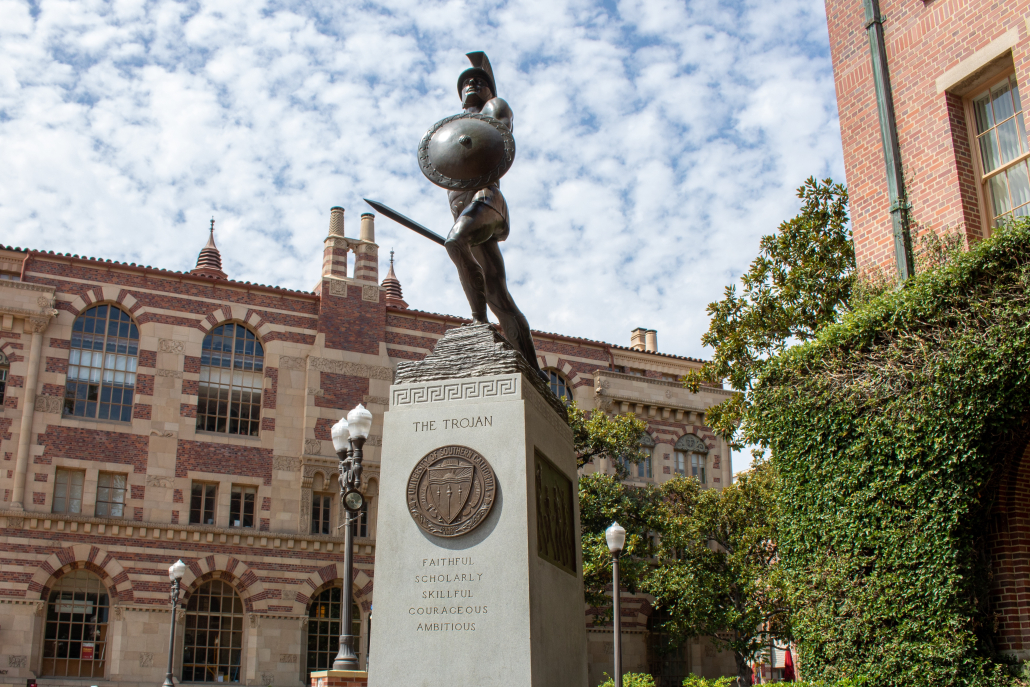Admissions removes Spring Ambassador nameplate

The USC Admission Center has officially retired the use of the Spring Admission Ambassadors Program nameplate and is instead transitioning into a single, holistic program as disclosed in a communitywide email earlier last month.
“While SAAP still exists, we will no longer hire additional students for the program,” the email read. “Rather, we are moving forward with one Student Ambassador program in the USC Admission Center to support all prospective and admitted students.”
Jessica Nielsen, executive director of student development and visitor relations, emphasized that program services aren’t being discontinued, only the title under which they fall.
“We’re not canceling the program,” Nielsen said, “but rather consolidating our ambassador roles within enrollment services.”
Program administrators hope the change will reduce a “duplication in efforts” and increase efficiency. Since 2015, Spring Admission Ambassadors have trained and worked separately from the main admission office staff, solely for incoming spring students. Under the reorganization effort, all prospective applicants must apply, complete and assist in standard ambassador duties under one program, including those interested in working with the spring population.
The admission center will continue to offer the spring mentorship program, provide pre-commitment information webinars for admits and provide individual one-on-one appointments with former spring admits working for the office as it did before under the SAAP. Programs like the mentorship program — a service housed within the SAAP — will remain unchanged during the transition, and will begin integrating new ambassadors with SAAP members to manage these services. Training new ambassadors in a wider range of positions will also allow ambassadors to take on more shifts over the school year if spring mentorship classes fail to fully fill, Nielsen said.
“Our department really focuses on helping [spring admits] understand what spring admission is, what their options are before they can start at USC and how they might choose to spend their fall semester,” Nielsen said.
Ethan Galbraith, a sophomore spring admit majoring in journalism and a prospective student ambassador, used SAAP up until his arrival to campus last spring. Galbraith’s experiences with the program ultimately swayed his decision to attend USC, something he wants to share with others.
“Those simple 45-minute, one-hour meetings over Zoom were game changers for me and I know they were game changers for other people too … I just hope this consolidation does not impact our ability to pay it forward,” Galbraith said.
Adrian Becerra, a senior majoring in computer science, games, joined the program two years ago in the fall of 2019. Becerra was surprised when he originally heard the news, but quickly found his concerns pre-accounted for.
“In the restructure, there is still going to be an expressed effort to hire a team of spring ambassadors, so that there’s always a spring admit available,” Becerra said.
Current spring ambassadors like Becerra who were trained under the old model will continue to provide services for spring students until their departure from the program, the last of which are expected to graduate within the next two years.
For Galbraith, the change in title was disappointing, he said.
“You’re already dealing with a separate set of challenges as a spring admit,” he said. ”It’s a specific set of students that are here specifically for you.”
However, after attending a Sept. 1 information session, Galbraith said he felt increasingly reassured about the transition and its continued impact.
“They were very honest with us in that not everything was figured out yet,” he said. “I thought to myself, okay, that’s totally fine … I’m a full supporter of it. I’ll support it until they give me a reason not to.”

